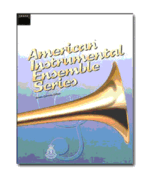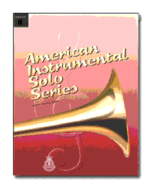-
Sweet Little Jesus Boy (F/Eb solo)
$9.95Often mistaken as a traditional spiritual, “Sweet Little Jesus Boy” was composed in 1934 by Robert MacGimsey who intentionally wrote the song in this style. It harkened back to his youth in Louisiana where he was steeped in the deep tradition of African American gospel music. In this culture, Christmas was a time to draw closer to God through personal prayer and meaningful songs, which was a stark contrast to what he observed in New York when he penned the song.
Written during the depression, “Sweet Little Jesus Boy” quickly became a standard Christmas tune, along with several other songs written at this time. Recorded by many artists over the years, the soulful recording by Mahalia Jackson in 1955 is perhaps the most famous.
-
Sweet Little Jesus Boy (F/Eb solo)
$29.95Often mistaken as a traditional spiritual, “Sweet Little Jesus Boy” was composed in 1934 by Robert MacGimsey who intentionally wrote the song in this style. It harkened back to his youth in Louisiana where he was steeped in the deep tradition of African American gospel music. In this culture, Christmas was a time to draw closer to God through personal prayer and meaningful songs, which was a stark contrast to what he observed in New York when he penned the song.
Written during the depression, “Sweet Little Jesus Boy” quickly became a standard Christmas tune, along with several other songs written at this time. Recorded by many artists over the years, the soulful recording by Mahalia Jackson in 1955 is perhaps the most famous.
-
Fanfare Prelude on Deep Harmony
$29.95Throughout his life, Count Zinzendorf (1700-1760) focused not on what he was doing for Christ but on the sufficiency of what Christ had done for him. His song “Jesus, Thy Blood and Righteousness” (Translated by John Wesley,1703-1791) is an outstanding example of this.
-
Prelude on “Beethoven”
$29.95Though the historical background for the hymn tune “Beethoven” seems nebulous, it has been effectively paired with many hymn texts. Here, the composer’s Prelude is based on the thought-provoking text by Frances Ridley Havergal (1836-1879), “Lord, speak to me that I may speak.”
Prelude on “Beethoven” includes settings of two verses. The first instance utilizes the first verse of Havergal’s text in a sensitive, somewhat pastoral fashion, which is introduced by the composer’s original melodic material. The second setting, based on verse seven, reflects the climactic nature of the text.
Verse 1
Lord, speak to me, that I may speak in living echoes of Thy tone.
As Thou hast sought, so let me seek Thy erring children lost and lone.Verse 7
O use me, Lord, use even me, Just as Thou wilt and when and where,
Until Thy blessed face I see, Thy Rest, Thy joy, Thy glory share. -
Life, Joy and Peace (Solo Bb/C)
$29.95Based on the wonderful old gospel song, “‘Tis so Sweet to Trust in Jesus” by Louisa M.R. Snead (1850-1917) and William James Kirkpatrick (1838-1921), this solo with instrumental ensemble accompaniment features one verse and two choruses from the song.
After a brief introduction based on intervals from the song, the soloist plays an original melody by the composer prior to a light and energetic rendition of the first chorus. The verse appears in a more sustained style by the soloist, accompanied by a smooth, chorale-like background.
The second chorus is played by the soloist while the opening original theme is juxtaposed underneath. The introduction is reintroduced prior to an ascending finale by the soloist. -
Life, Joy and Peace (Solo Bb/C)
$9.95Based on the wonderful old gospel song, “‘Tis so Sweet to Trust in Jesus” by Louisa M.R. Snead (1850-1917) and William James Kirkpatrick (1838-1921), this solo with instrumental ensemble accompaniment features one verse and two choruses from the song.
After a brief introduction based on intervals from the song, the soloist plays an original melody by the composer prior to a light and energetic rendition of the first chorus. The verse appears in a more sustained style by the soloist, accompanied by a smooth, chorale-like background.
The second chorus is played by the soloist while the opening original theme is juxtaposed underneath. The introduction is reintroduced prior to an ascending finale by the soloist. -
Count Your Blessings
$29.95This light-hearted setting of the well-known song, “Count Your Blessings,” extensively features short silences (rests) to challenge young instrumentalists to know when – and when not – to play. Hence, the title!
-
Sacrifice Of Praise
$29.95This arrangement is based on the tune “Rousseau” composed by Jean-Jacques Rousseau (1712-1778), a citizen of Geneva, Switzerland. It has been used by teachers, musicians, and film makers over the centuries to the words, “Go Tell Aunt Rhody” and other lesser-known texts.
This majestic setting features the text by Folliott S. Pierpoint (1835-1917):
-
-
-
-
-
-



